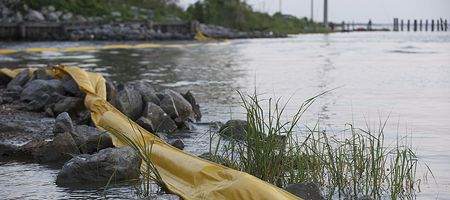More than a year after the largest oil spill in history, scientists have discovered that much of the oil was eaten by microbes, fast – but they still don’t know what the microbes did with all the energy they gained.

Woods Hole Oceanographic Institution (WHOI) researchers studied samples from the surface oil slick and surrounding Gulf waters. They found that bacterial microbes inside the slick degraded the oil five times faster than microbes outside the slick, largely explaining how the slick disappeared just three weeks after Deepwater Horizon’s Macondo well was shut off.
However, there was no increase in the number of microbes inside the slick — something you’d expect as a byproduct of increased consumption.
The team was surprised that the microbes were able to consume the oil so fast, because nutrients such as nitrogen and phosphorus — usually essential for microbes to grow and make new cells — were scarce in the water and oil in the slick.
But by using a special sensor called an oxygen optode to track the changing oxygen levels in water samples taken from the slick, the researchers found that the bacteria actually respired at a very high rate.
Biochemist Bethanie Edwards says she’s surprised by the amount of oil consumption by the microbes – and a little afraid that oil companies might use the results to claim that spills can do relatively little harm.
“They could say, ‘Look, we can put oil into the environment and the microbes will eat it,’” she says.
In fact, oil is composed of a complex mixture molecules, some of which the microbes are unable to break down – and these are the kinds of molecules that can get into the food web.
“Oil is still detrimental to the environment, because the molecules that are not accessible to microbes persist and could have toxic effects,” she says.
Follow-up studies are already in place to find out what the microbes did with the energy – the team suggests that they may convert the energy to some other molecule, like sugars or fats.






